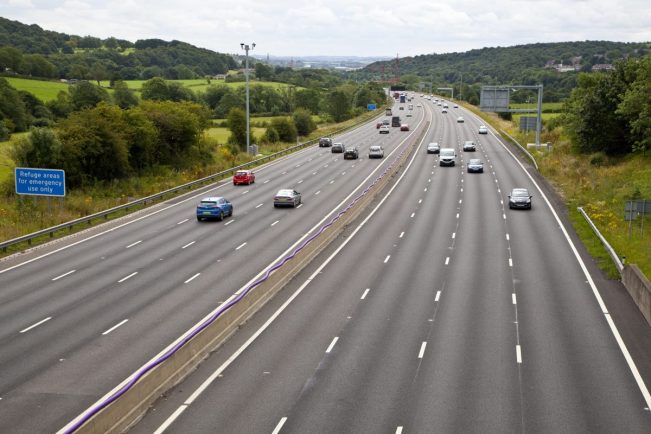A TOWN driving instructor says he thinks smart motorways can be made safer and the concept was ‘not a bad idea’ for easing congestion and improving traffic flow.
But David Mann, from ADI Bromsgrove Driving School, said more training was needed so people could understand them better.
“I am a statistic-orientated fellow and the figures for them currently is not good enough.
“There are things that can be done to make the smart motorways safer with regard to the technology and more refuge areas but the other aspect is driver training.
“We are lucky here because we have them all around us but there may be people living somewhere like Devon who have never been on one.”
He has called for more ‘enforced training’ to be done to ensure motorists are competent when they use the smart motorways.
It follows a damning report into smart motorway safety on this week’s BBC’s Panorama.
The change to a smart motorway the hard shoulder is converted to an extra lane which can cause issues if a vehicle breaks down or there is a collision.
With all four lanes being ‘live’ with traffic, there is often nowhere for drivers to pull over safely and with no hard shoulder there can also be problems for the emergency services getting through congested traffic.
Shocking statistics showed a stretch of the M25 had 72 ‘near misses’ in five years prior to becoming a smart motorway but 1,485 in the same period afterwards.
When the first one was piloted on the M42, refuge areas for people to pull into if needed were positioned every 600 metres.
But when the format was rolled out those areas on some smart motorways were up to two-and-a-half miles apart.
Another point raised in Panorama was that the different types of motorway were proving too confusing for drivers.
As well as conventional and smart motorways, ‘dynamic motorways’ had also been introduced where sometimes the first lane was used a hard shoulder and at other times it was not. Its status is dictated by whether the electric board above it showed a red cross or not.
Most of the time when vehicles collide or break down, operators monitoring a network of cameras identify where the incidents have taken place.
Only one motorway – the M25 – has specialist radar ‘stationary vehicle’ technology which spots broken down vehicles and crashes when they come to a standstill and alerts drivers through the overhead boards.
It was argued on the BBC programme that using this technology across the overall smart motorway network could make the roads even more safer and it should have already been done.
Transport Secretary Grant Shapps has halted the roll-out of smart motorways until a full review has been carried out on the concept.
- WHAT do you think? Can adjustments be made to smart motorways to make them safer? Or should the Government convert them back to how they were or find an alternative format? Email your views to [email protected]











